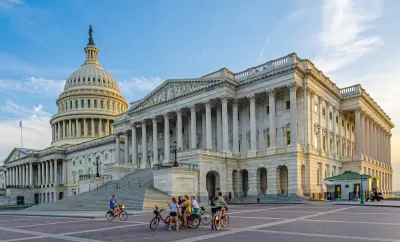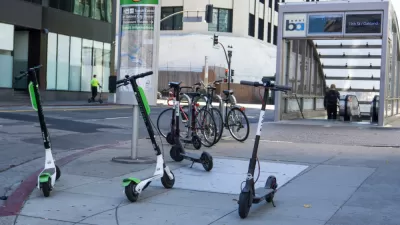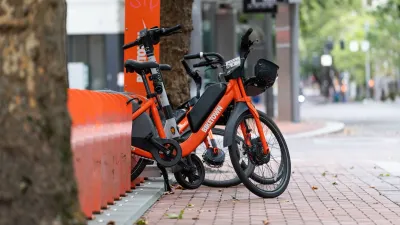D.C. residents and visitors take as many as 30 million trips on bikes or shared mobility, yet bike lanes cover just one quarter of one percent of the District’s streets.

Washington, D.C.’s Capital Bikeshare, known as CaBi, continues to see a growth in ridership, reports Travis McIntyre for Greater Greater Washington. “CaBi had its highest ridership year ever in 2023, with 4.5 million trips, and is already up 31% through July of this year compared to the same time period in 2023. Further, shared fleet device program operators—including Lime, Lyft, Spin, and Veo—saw a record-breaking 6.7 million trips in DC in 2023 and have seen a 17% increase so far in 2024 through June.”
Essentially, McIntyre writes, biking in the District is practically a new normal. McIntyre projects that D.C. riders will take close to 14 million trips on shared mobility in 2024 — and that doesn’t include rides taken on personal bikes and other mobility devices.
While no official number exists, McIntyre notes it could be as high as 1.9 personal trips for every rental trip. “If CaBi were compared to public transit agencies in the region, it would rank in the middle for total ridership, above MARC and below DASH. If the estimate for total bikes+ trips in DC were similarly compared, it would rank well above every transit agency in the region besides WMATA.”
The point, for McIntyre, is that “Bikes+ are mainstream, widespread, and a major player in our region’s transportation system. But we still don’t have a connected and protected bike lane network in the District, or any of its surrounding jurisdictions.”
FULL STORY: Biking in the District is for normies—that’s a good thing

Alabama: Trump Terminates Settlements for Black Communities Harmed By Raw Sewage
Trump deemed the landmark civil rights agreement “illegal DEI and environmental justice policy.”

Planetizen Federal Action Tracker
A weekly monitor of how Trump’s orders and actions are impacting planners and planning in America.

Why Should We Subsidize Public Transportation?
Many public transit agencies face financial stress due to rising costs, declining fare revenue, and declining subsidies. Transit advocates must provide a strong business case for increasing public transit funding.

Understanding Road Diets
An explainer from Momentum highlights the advantages of reducing vehicle lanes in favor of more bike, transit, and pedestrian infrastructure.

New California Law Regulates Warehouse Pollution
A new law tightens building and emissions regulations for large distribution warehouses to mitigate air pollution and traffic in surrounding communities.

Phoenix Announces Opening Date for Light Rail Extension
The South Central extension will connect South Phoenix to downtown and other major hubs starting on June 7.
Urban Design for Planners 1: Software Tools
This six-course series explores essential urban design concepts using open source software and equips planners with the tools they need to participate fully in the urban design process.
Planning for Universal Design
Learn the tools for implementing Universal Design in planning regulations.
Caltrans
Smith Gee Studio
Institute for Housing and Urban Development Studies (IHS)
City of Grandview
Harvard GSD Executive Education
Toledo-Lucas County Plan Commissions
Salt Lake City
NYU Wagner Graduate School of Public Service





























